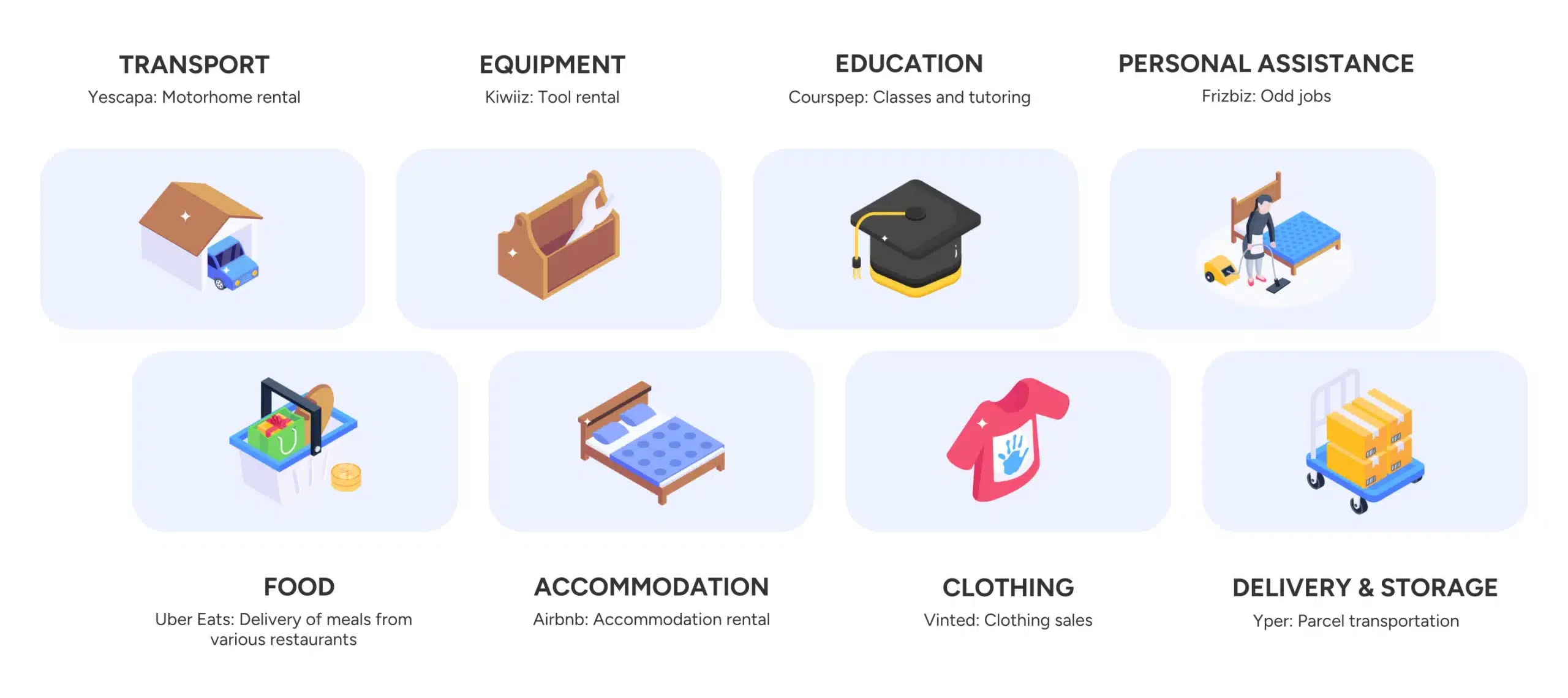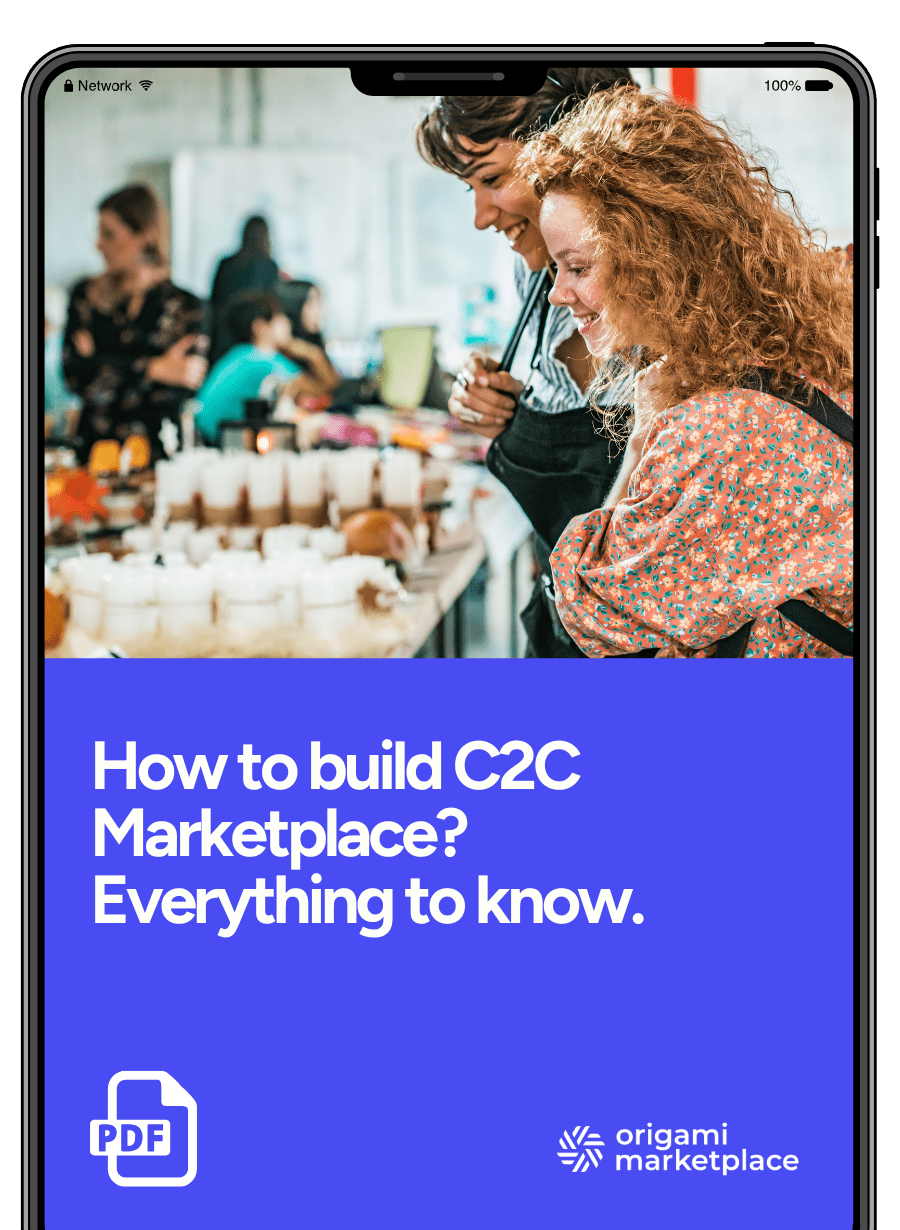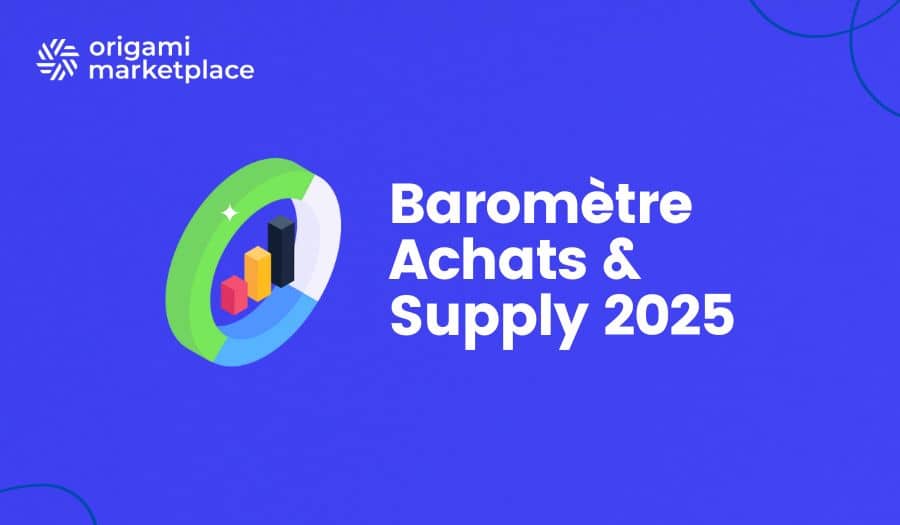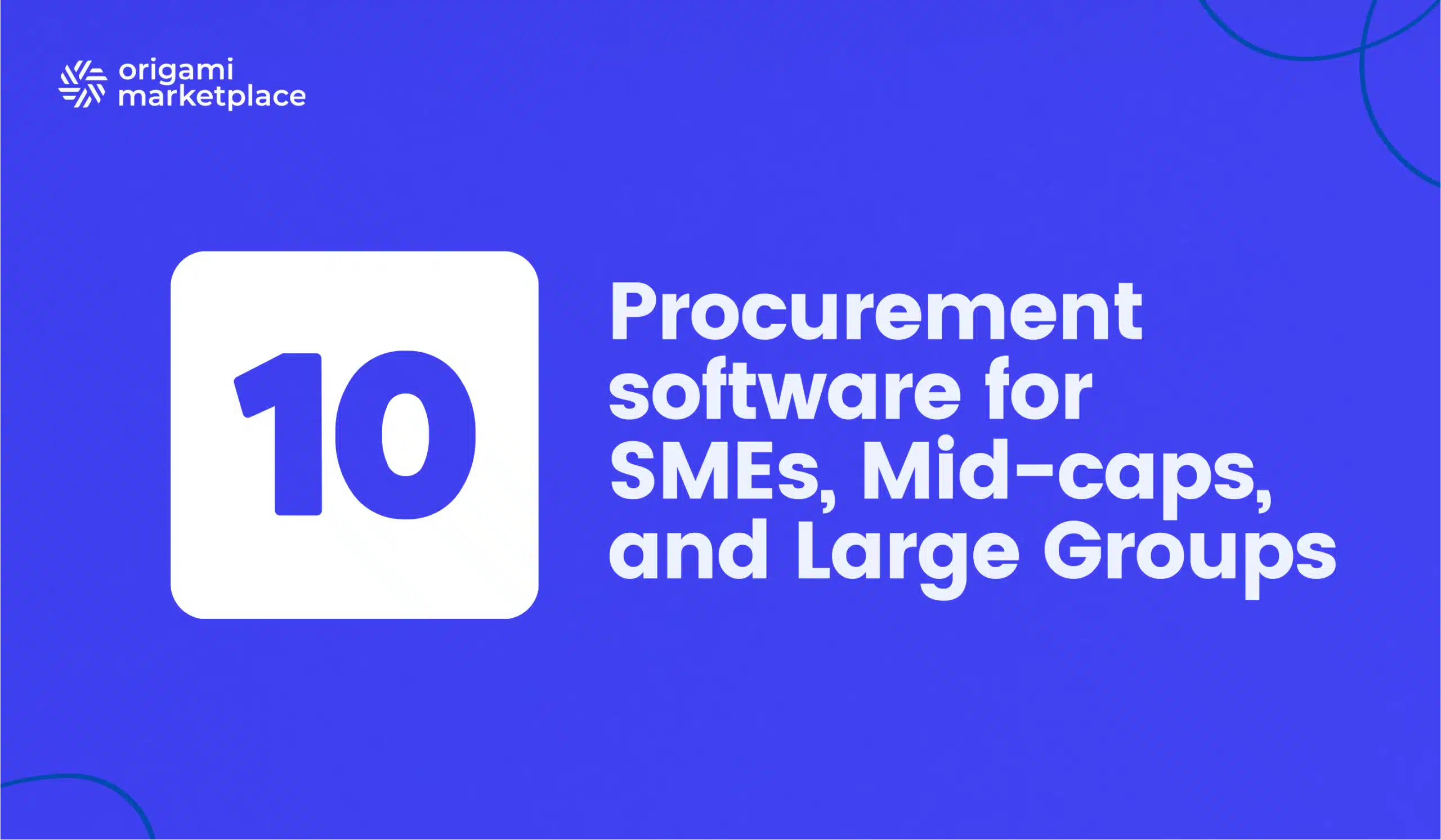C2C Marketplace: Reinventing the way you consume
- Arnaud
- 9 minutes reading

In the current socio-economic and environmental climate, consumers are embracing new consumption habits. They are naturally turning toward ecological alternatives, such as the second-hand and refurbished goods markets. Always on the lookout for fresh offerings and new ways to shop, more and more online users are drawn to C2C marketplaces.
This innovative consumption model has been flourishing in recent years, and we will outline its key features to shed light on the platforms that surround us in our daily lives platforms that embody a more responsible form of consumption.
Discover how peer-to-peer marketplaces stand apart from B2B and B2C platforms, and learn why major web players are increasingly betting on this emerging marketplace model.
1. What is a C2C marketplace?
2. What are the key features of the C2C marketplace model?
3. Eight reasons to create your own C2C marketplace
4. Which logistics model should you integrate into a C2C marketplace?
5. What are the key success factors for running a successful C2C marketplace?
6. How to create a C2C marketplace?
7. How to attract users to your C2C marketplace?
8. Examples of successful C2C marketplaces
👋 No time to read the whole article? Find the summary here.
1. What is a C2C marketplace?
If the term seems unfamiliar to you, it’s quite likely that you have already sold, rented, or purchased a good or service on a C2C marketplace like Vinted or BlaBlaCar successful examples that have adapted to new consumption habits. These platforms connect private individuals looking to sell or rent goods and services.
What sets these marketplaces apart from other platforms is primarily the fact that buyers are often also sellers, whereas other types of marketplaces have clearly defined “seller” and “buyer” roles.
In recent years, these platforms have rapidly expanded, fueled by the collective interest in the sharing economy. Today, they cover a wide range of sectors, some of which you’ll find listed below (this list is by no means exhaustive).
With the current economic climate, the growth of second-hand markets particularly through C2C marketplaces continues to accelerate.

Creating a C2C marketplace may seem complex, but with the right strategies and expert guidance, it’s entirely achievable. I can help you build a platform that meets both your users’ expectations and environmental challenges. Let’s discuss your project and make your vision a reality.

Alexandre Duquenoy
→ Talk to our solutions expert
2. What are the key features of the C2C marketplace model?
To make users’ daily lives easier, it’s essential to offer them a user-friendly tool designed with their needs in mind. Just like B2B or B2C marketplaces, a C2C marketplace should include a range of key features:
- Simple registration in just a few clicks
- Streamlined and expedited seller identity verification
- Extremely simplified listing process so that private individuals are not discouraged from posting their ads
- Instant messaging, allowing users to share additional product information, send photos, videos, etc.
- Secure transactions with suitable payment methods (credit card, PayPal, and so forth)
- Automatic generation of a shipping label based on the buyer’s chosen carrier
- Efficient customer support (after-sales service) capable of handling potential disputes between buyers and sellers when situations become deadlocked. This will go a long way toward building user trust in your platform.
To stand out from the competition, offering innovative, high value-added features that enhance the user experience is also a major asset:
- Online item reservation
- Notifications (email, SMS) to track the progress of the shipment
- Geolocation services to connect users located near one another (mandatory for marketplaces offering services between individuals)
- Buyer and seller ratings
- Optional product authentication services for second-hand luxury goods, for example
- Automatic translation of listings and instant messages for international marketplaces
3. 8 reasons to create your own C2C marketplace
Unlike a traditional e-commerce site, a C2C marketplace naturally offers a catalog supplied by individual users. The supply is daily, spontaneous, and unlimited. This makes it very easy for a marketplace operator to find new avenues for growth and to offer a wide range of products or services on the platform.
- You can increase your revenue through commissions collected on sales made on your platform.
- Launching a C2C marketplace can help build brand awareness and attract new customers. In fact, most consumers start by purchasing a second-hand product to test a brand before considering the purchase of a new product. Additionally, the more accessible prices of used goods enable you to reach customers you might not have otherwise.
- The C2C marketplace model allows you to offer “forbidden brands” on your platform—brands you wouldn’t otherwise be able to sell.
- Specialized C2C marketplaces allow you to build a strong community of people who share the same interests and needs.
- By offering a solution for reselling older products, you optimize your customer experience, guiding them through all stages of the product’s lifecycle, including its resale. In doing so, you show your customers that you care about the environmental impact of your business and that you are implementing solutions to reduce it.
- By creating a C2C platform, you prove to your customers that your products are of sufficient quality to have multiple lifecycles.
- The marketplace model is scalable. Initially, you can offer second-hand products between individuals in a specialized niche, and once your community is established, you can expand your offerings with complementary services or other products, allowing you to become the go-to site in your sector.
- If you have physical stores, offering click & collect delivery for items will boost your in-store traffic and thus your revenue.
Among C2C marketplaces, some have distinguished themselves through their positive environmental impact. BlaBlaCar, for example, offers a carpooling platform between individuals. In 2022, more than 300,000 people made at least one carpooling journey via dedicated platforms.
Thanks to its many possible uses, the C2C marketplace enables both individuals and businesses to reduce their carbon footprint.
Download our free white paper.
Discover how to build a success of your first C2C marketplace. Tips and best practices to get you started in the second-hand and circular economy.
4. Which logistics model should you integrate into a C2C marketplace?
Usually borne by the seller, the logistics chain doesn’t pose a problem for B2C and B2B marketplace operators.
However, in the case of C2C, the marketplace operator must streamline the processes as much as possible, so that individual sellers can sell and ship their packages with the utmost ease.
To achieve this, the marketplace operator establishes direct contracts with carriers, allowing the buyer to choose from various delivery options, while the seller simply needs to print and attach the shipping label to the package.
It’s recommended that C2C marketplaces offer at least 3 delivery methods:
- Home delivery
- Express delivery
- Delivery to a pickup point
- If you have physical stores, you can also offer in-store pickup to increase foot traffic in your shops.
5. What are the key success factors for running a successful C2C marketplace?
The success of a C2C marketplace largely depends on creating a strong, passionate community that regularly visits your site to find good deals, access industry-related information, and interact with others who share their interests.
You should therefore launch a platform focused on a sector that brings together a large number of enthusiasts. That’s why C2C marketplaces centered around hobbies (sports, DIY, home improvement and decor, etc.) are often very successful.
To ensure the success of your marketplace, you must ensure that posting listings is simple enough so that it’s accessible to as many people as possible and doesn’t pose a barrier for individual sellers.
Next, you should provide an instant messaging feature, allowing users to communicate directly with one another about a product requesting additional information, negotiating prices, or discussing delivery terms.
Finally, you must take all necessary precautions to maintain the trust your users place in your platform. To do this, you need to moderate listings to remove as many fraudulent posts as possible, implement buyer protection in case the received product doesn’t match the order, and offer efficient after-sales support for managing disputes when no solution can be found between buyer and seller. You can also restrict access to your platform by implementing a referral system, similar to Gens de Confiance, which requires new members to be recommended by three existing members before they can view listings.
Ready to dive into creating your own C2C marketplace? I’m here to guide you! With our expertise in the circular economy, we can help you structure your project and overcome the challenges associated with this model. Feel free to contact me to discuss your ideas and goals.

Antoine Mantel
→ Talk to our solutions expert
6. How to create a C2C marketplace?
To create your C2C marketplace, you first need to review the tools you’ve already implemented. This will allow you to decide whether you’ll launch a marketplace from scratch or add a marketplace module to your existing e-commerce site.
Indeed, you can add a C2C marketplace module to e-commerce sites running on most existing solutions (Shopify, Magento, Prestashop, and more).
Next, you’ll need to define your objective and your business model. Most often, revenue sources include sales commissions and subscription fees. However, other business models are possible.
You should then determine your budget, taking into account various expenses such as the marketplace solution, fees charged by your payment service provider (PSP), and hiring staff to handle listing moderation and customer support. It’s also highly recommended to involve experts during the scoping phase of your project to optimize your budget and speed up your time-to-market.
At the same time, you can start building your community so that it’s informed and anticipating the launch of your platform. Finally, once your platform is live, spread the word!
7. How to attract users to your C2C marketplace?
If you’ve put effort into building a strong community around your industry and have begun making a name for yourself in the field, attracting your first visitors won’t be too difficult.
However, to keep them around, you’ll need to have a few listings already in place. Otherwise, your users will feel like they’re entering an empty store. To achieve this, if you run a shop in the same industry as your marketplace, post a few listings using your own products. If not, consider forming partnerships with key brands in your sector.
Implementing a user rating system will increase their trust in your platform.
You can also develop an acquisition strategy by offering welcome coupons or a referral system that encourages initial users to bring in new ones. Additionally, you could run targeted ads on social media and set up affiliate programs to reward people who spread the word about your marketplace.
Moreover, make sure to encourage your users to provide detailed product descriptions, which will improve your site’s organic search rankings over the long term. Finally, since the C2C marketplace model is community-driven, word of mouth should help boost your sales.
Download our free marketplace specifications template.
Here you will find all the essential features to succeed in your multi-vendor marketplace. This model provides a simple backlog to guide you through each step of your project.

8. Examples of successful C2C marketplaces
There are many successful C2C marketplaces across all sectors. The most well-known include Leboncoin, Vinted, Airbnb, and Uber. However, numerous other marketplaces operating in niche sectors have also achieved real success. One such example is Preppy Sport, which we’ll discuss later.
Vinted, one of the most famous peer-to-peer marketplaces, connects individuals for the resale of clothing. It’s a pioneer in the second-hand sector, boasting €245 million in revenue in France in 2022. Of its 65 million users, more than 19 million are in France, making the French market its most important.
Let’s consider another example: Preppy Sport, the first online “tack swap” marketplace. Its founder, Camille Traverse, fully understood today’s market challenges by offering a C2C platform for buying and selling equestrian equipment—a niche market that still boasts more than 37,000 regular customers, 40,000 active listings, and 150 new products every day. This sector has also embraced the purchase of second-hand gear, moving toward a collaborative consumption model.
Ultimately, the peer-to-peer marketplace has become the new gold standard in terms of responsible and collaborative consumption. Vintage and refurbished markets, in particular, give everyday items a second life while offering users a truly engaging experience.
Innovative features of the C2C marketplace provide valuable differentiation levers, allowing marketplace operators to explore new avenues for their business model. It’s a proven model whose emergence has inspired major players Airbnb, Facebook, BlaBlaCar, and Rakuten to build the responsible marketplaces of tomorrow.
We hope this article has answered your questions about C2C marketplaces. If you have any questions or would like to discuss your project, our team of experts is at your disposal to assist you.
Summary of the article:
C2C (Consumer-to-Consumer) marketplaces are reshaping our habits by promoting more responsible and collaborative consumption. These platforms allow private individuals to sell, rent, or buy directly from one another, much like Vinted or BlaBlaCar. Fueled by growing interest in the circular economy, they stand out for their ability to reduce environmental impact while meeting new consumer expectations.
With key features such as simplified listing processes, secure transactions, and tailored logistics solutions, C2C marketplaces are attracting a growing number of users. This innovative model also offers opportunities for revenue growth, customer loyalty, and the creation of engaged communities.
Inspired by successful examples like Airbnb and Preppy Sport, these platforms represent the future of a more sustainable and collaborative economy one in which every transaction contributes to more mindful consumption.
Discover how Origami Marketplace’s API and partner network can transform your business, regardless of its size, with its innovative marketplace-based solution.



